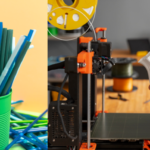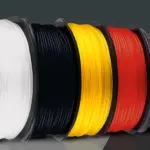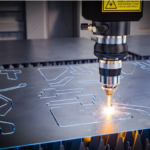Wood is the best material for laser engraving or cutting and it is mostly used for vast laser cutting projects.
It gives a natural feel that suits perfectly with timeless uses and applications. Although, the kind of wood you use has a huge impact on the result of your laser cutting.
In this article, I will tell you why some wood is better for laser cutting than others. Also, I’ll explain how to choose the wood that is suitable for laser cutting and explore the kinds of wood that are the best for laser cutting.
Table of Contents
What is the best wood for laser cutting?
The wood is light weighted and has lower chunks that will produce attractive and high-quality laser cutting. Some of the best woods for laser cutting include Alder, Plywood, Fir, Douglas, Balsa, and Cork. The resin of wood content decides whether your laser cutting becomes light and dark.
Tips for choosing wood for laser cutting
Understanding the best kind of wood types is not enough you also need to consider some points before getting the wood for your laser cutting & engraving project which includes:
1.Check the resin content
The resin content of the laser cutting wood that is hand-picked will have a huge effect on whether the wood burns darker or lighter. It is considered as important in the laser cutting & engraving project cause the quantity of resin contained decides the wood burns dark or light.
Pro tip: The easy way to know the resin content is to practice a quick burn test on your wood plaque.
2.Learn the different types of woods
Their many types of wood are the best option for laser cutting & engraving. It is tough to differentiate the differences between types of wood for laser cutting and how they will work and impact the outcome of your project.
Softwood: This is a mostly used wood type that includes poplar and balsa. It can laser cut quicker with less power. Softwood is lighter and has smaller contrast.
Hardwood: Hardwood is typically heavier and thicker than other woods and needs a higher level of power for laser cutting. For example cherry and oak. However, in comparison to softwood and hardwood provide more setoff when they become engraved.
Plywood: An appropriate option for many different laser cutting projects, plywood provides various of sizes and types. But, if you choose plywood, then make sure to choose an option that is directly marketed for laser use like baltic birch. This kind of wood contains a minimum of 3 layers of wood, and the grain is glued and pressed.
Pro tip: Professional suggests that opt for a white-glued plywood panel for the laser project or you can buy some that are specifically designed for laser.
Coniferous Woods: there are many types of wood that are not suitable for laser cutting such as larch, or fir. They normally have very lumpy grains, which are also mostly very tough to work with. And then, the wood surrounding the grain is soft, making it tough to decide the right parameters for this type of wood.
Veneers: These types of wood are referred to as thin slices of wood which include bark sometimes. This kind of wood is made from real wood on which you can laser engrave or cut it with a solid wooden board.
Some other options of wood for laser cutting
MDF (Medium Density Fiberboard): MDF is wood-based, homogenous wood material made up of mostly bark-free, fiberization softwood. It is a wood product engineered by layering hardwood and softwood. These are then mixed with wax and resin binder and formed into the panel through the application of high temperature and pressure. MDF is denser than plywood.
Note: Please note that however, the cutting edge can become very dark during the laser process.
High-Density Fiberboard (HDF): This wood is usually known as hardboard, HDF is a special kind of fiberboard that looks like MDF but stronger, harder and heavier. Because it is technically made from the layered fiber of the wood that has exploded.
3. Test the wood before starting the project
The types and heavy of wood that you choose to engrave or cut will have a huge impact on your laser wood cutting project. The speed, power, and setting of laser cutting are also an impactable factor. That’s why you need to test material on a small piece of wood before starting the project.
4. Fixing the cutting parameter
Almost every professional uses the grayscale matrix, which can easily and quickly decide the desired cutting parameters for your products. The more you defocus (z-offset, averagely. 0.5-2mm), the darker cutting will be. Defocusing the laser will extend its spot size and lessen its performance size. This means it will burn the wood rather than allowing it to pass directly into a gaseous form. This is amazing for efficiency, but the finer details can be glitches.
Pro tip: The messy and sticky dust that is produced by the laser when cutting wood should never stick to your cutting material. Cause it will quickly ruin the quality. So, professionals suggest utilizing an application tape to the working surface. It will produce a short-term surface protection measure.
After the laser cutting is accomplished, it is gently eliminated. Please note that it is no match for photo engraving or very fine-line engraving, being that will mean that a small piece will then want to be eliminated later. While choosing your application tape, assure that your choice PVC-free and that it is easily removable.
5. Recheck the finished goods
After completing the cutting or engraving task professionals need to check their work thoroughly. If it is the same product or quality that they wanted or their customer wanted.
Final words:
Considering your wood cutting & engraving project begins with a quality and a decent piece of wood that is ideal and flat then you will have the expected outcome. Don’t forget that the thickness that you want to make the result you are seeking for.
If your project is completed and satisfied with the outcome of your project make sure to use a rag to lightly scrub off any remaining dust. The easy way to ensure that your project is a success is by choosing the decent laser cutter with the most reliable and responsible laser cutter software.
Get in touch with us today to get more informed about your laser cutting & engraving project. Your dream, our responsibility, you can trust us for this task, the outcome will be amazing and high-quality.









